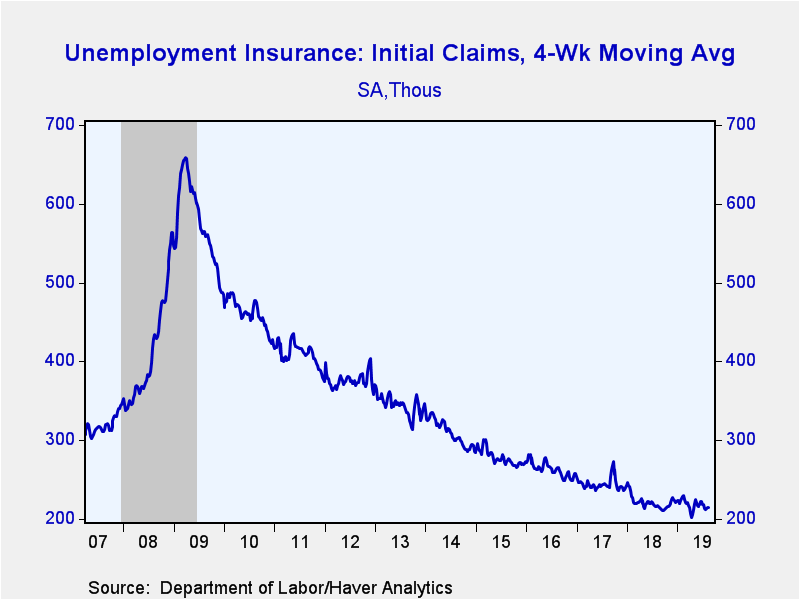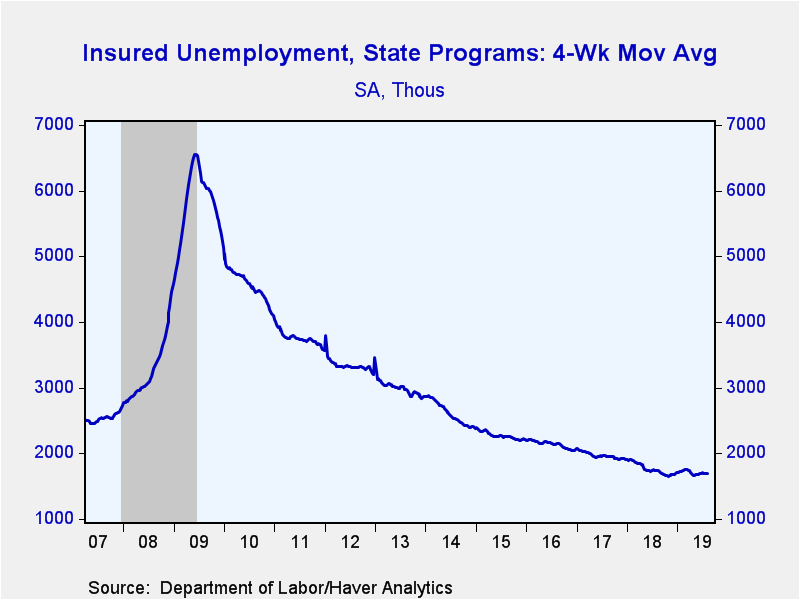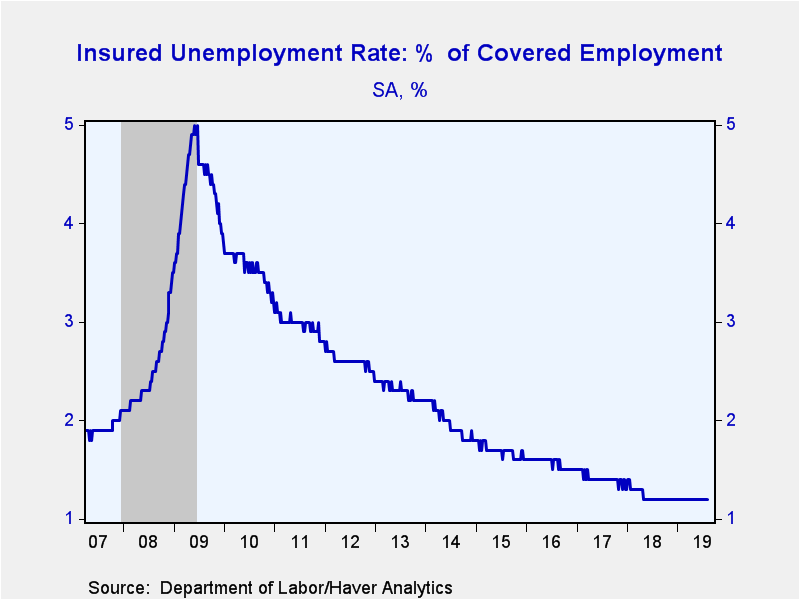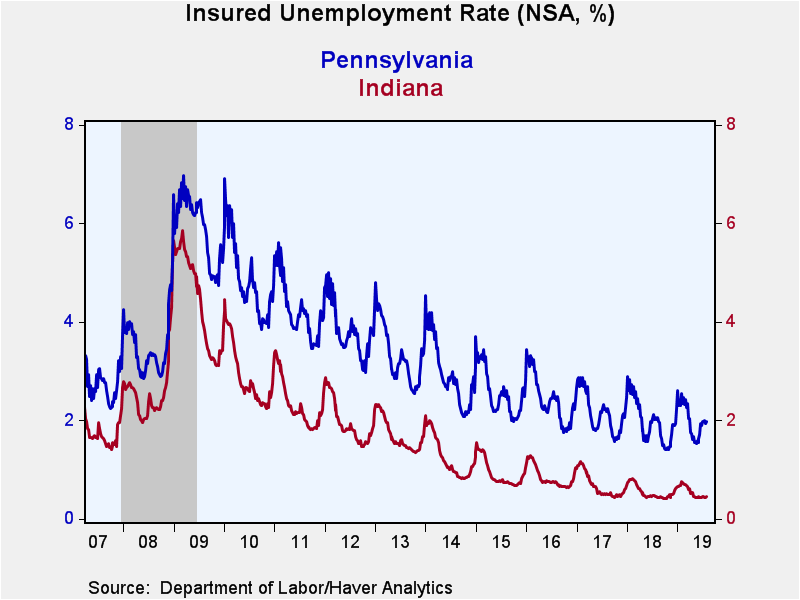 Global| Aug 22 2019
Global| Aug 22 2019U.S. Initial Unemployment Insurance Claims Decline Sharply
by:Tom Moeller
|in:Economy in Brief
Summary
Initial unemployment insurance claims fell to 209,000 (-2.1% y/y) during the week ended August 17 from the prior week's 221,000, revised from 220,000. The Action Economics Forecast Survey expected a lesser decline to 218,000 initial [...]
Initial unemployment insurance claims fell to 209,000 (-2.1% y/y) during the week ended August 17 from the prior week's 221,000, revised from 220,000. The Action Economics Forecast Survey expected a lesser decline to 218,000 initial claims. The four-week moving average of initial claims of 214,500 compared to 214,000 in the prior week. It remained above the 50-year low of 201,500 reached in April.
The latest initial claims figure covers the survey week for August nonfarm payrolls. Claims fell 7,000 (-3.2%) from the July period. During the last twenty years, there has been a 69% correlation between the level of initial jobless claims and the m/m change in payroll employment.
Continuing claims for unemployment insurance declined to 1.674 million (-3.1% y/y) during the week ended August 10 from 1.728 million in the prior week, revised from 1.726 million. The four-week moving average of claimants eased to 1.697 million from 1.698 million.
The insured rate of unemployment remained at the record low 1.2%, where it has been since May 2018. Data on the insured unemployment rate go back to 1971.
Insured rates of unemployment vary widely by state. During the week ending August 2, the lowest rates were in South Dakota (0.26%), Nebraska (0.40%), Utah (0.45%), Indiana (0.46%) and North Carolina (0.48%). The highest rates were in Rhode Island (1.79%), California (1.92%), Pennsylvania (1.98%), Connecticut (2.14%) and New Jersey (2.38%). Amongst other large states the rate was 0.50% in Florida, 1.00% in Michigan, 1.03% in Texas and 1.41% in New York. These state data are not seasonally adjusted.
Data on weekly unemployment claims going back to 1967 are contained in Haver's WEEKLY database, and they are summarized monthly in USECON. Data for individual states are in REGIONW. The expectations figure is from the Action Economics Forecast Survey, carried in the AS1REPNA database.
| Unemployment Insurance (SA, 000s) | 08/17/19 | 08/10/19 | 08/03/19 | Y/Y % | 2018 | 2017 | 2016 |
|---|---|---|---|---|---|---|---|
| Initial Claims | 209 | 221 | 211 | -2.1 | 220 | 244 | 262 |
| Continuing Claims | -- | 1,674 | 1,728 | -3.1 | 1,756 | 1,961 | 2,135 |
| Insured Unemployment Rate (%) | -- | 1.2 | 1.2 |
1.2 |
1.2 | 1.4 | 1.6 |
Tom Moeller
AuthorMore in Author Profile »Prior to joining Haver Analytics in 2000, Mr. Moeller worked as the Economist at Chancellor Capital Management from 1985 to 1999. There, he developed comprehensive economic forecasts and interpreted economic data for equity and fixed income portfolio managers. Also at Chancellor, Mr. Moeller worked as an equity analyst and was responsible for researching and rating companies in the economically sensitive automobile and housing industries for investment in Chancellor’s equity portfolio. Prior to joining Chancellor, Mr. Moeller was an Economist at Citibank from 1979 to 1984. He also analyzed pricing behavior in the metals industry for the Council on Wage and Price Stability in Washington, D.C. In 1999, Mr. Moeller received the award for most accurate forecast from the Forecasters' Club of New York. From 1990 to 1992 he was President of the New York Association for Business Economists. Mr. Moeller earned an M.B.A. in Finance from Fordham University, where he graduated in 1987. He holds a Bachelor of Arts in Economics from George Washington University.










